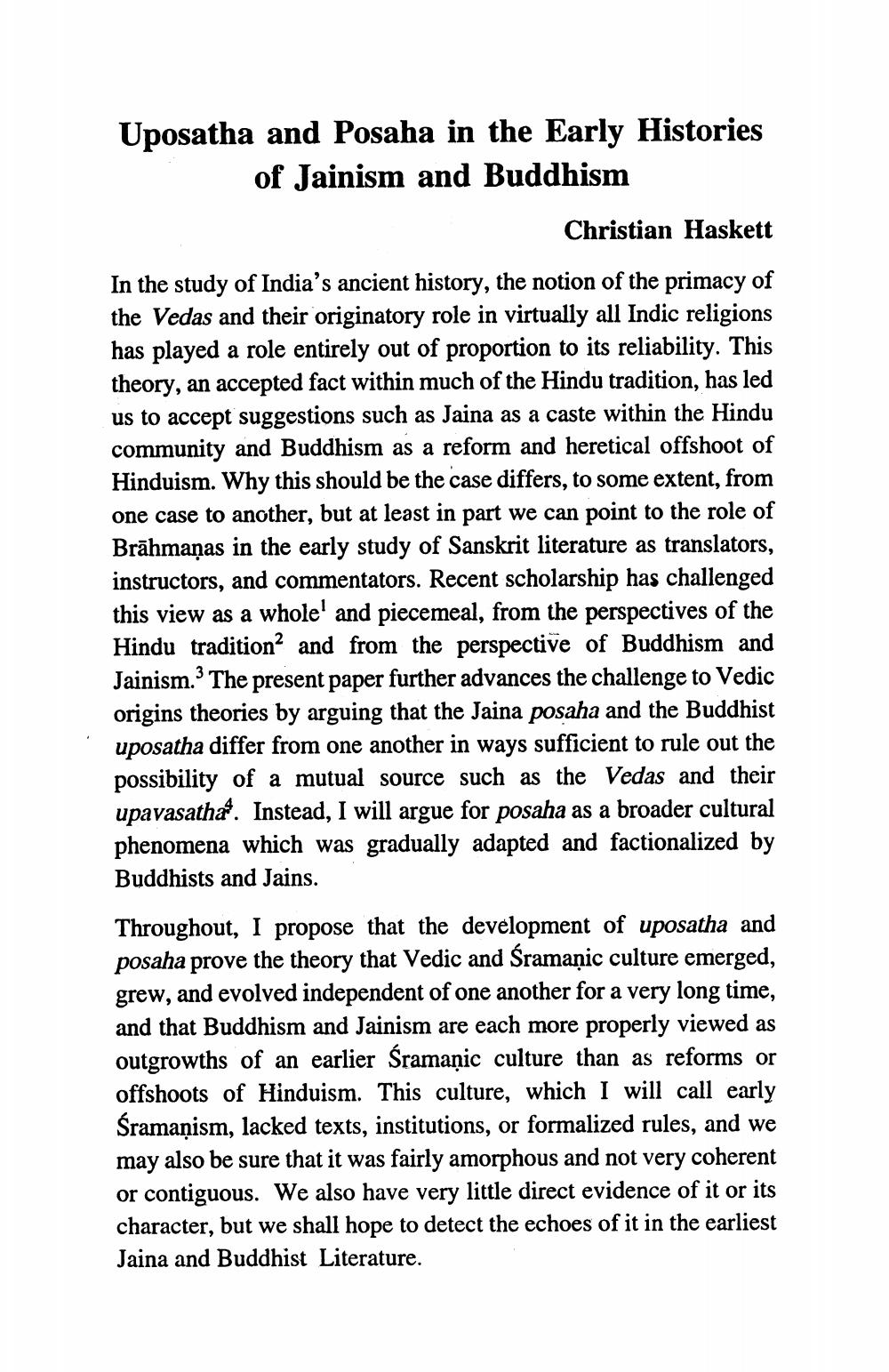________________
Uposatha and Posaha in the Early Histories of Jainism and Buddhism
Christian Haskett
In the study of India's ancient history, the notion of the primacy of the Vedas and their originatory role in virtually all Indic religions has played a role entirely out of proportion to its reliability. This theory, an accepted fact within much of the Hindu tradition, has led us to accept suggestions such as Jaina as a caste within the Hindu community and Buddhism as a reform and heretical offshoot of Hinduism. Why this should be the case differs, to some extent, from one case to another, but at least in part we can point to the role of Brāhmaṇas in the early study of Sanskrit literature as translators, instructors, and commentators. Recent scholarship has challenged this view as a whole' and piecemeal, from the perspectives of the Hindu tradition2 and from the perspective of Buddhism and Jainism.3 The present paper further advances the challenge to Vedic origins theories by arguing that the Jaina posaha and the Buddhist uposatha differ from one another in ways sufficient to rule out the possibility of a mutual source such as the Vedas and their upavasatha. Instead, I will argue for posaha as a broader cultural phenomena which was gradually adapted and factionalized by Buddhists and Jains.
Throughout, I propose that the development of uposatha and posaha prove the theory that Vedic and Śramanic culture emerged, grew, and evolved independent of one another for a very long time, and that Buddhism and Jainism are each more properly viewed as outgrowths of an earlier Śramanic culture than as reforms or offshoots of Hinduism. This culture, which I will call early Śramanism, lacked texts, institutions, or formalized rules, and we may also be sure that it was fairly amorphous and not very coherent or contiguous. We also have very little direct evidence of it or its character, but we shall hope to detect the echoes of it in the earliest Jaina and Buddhist Literature.




